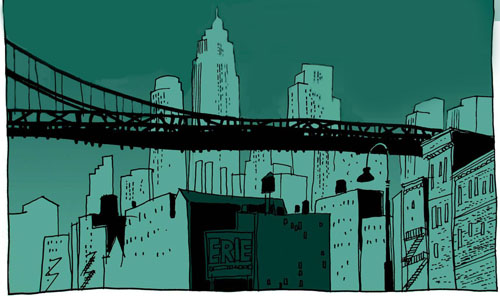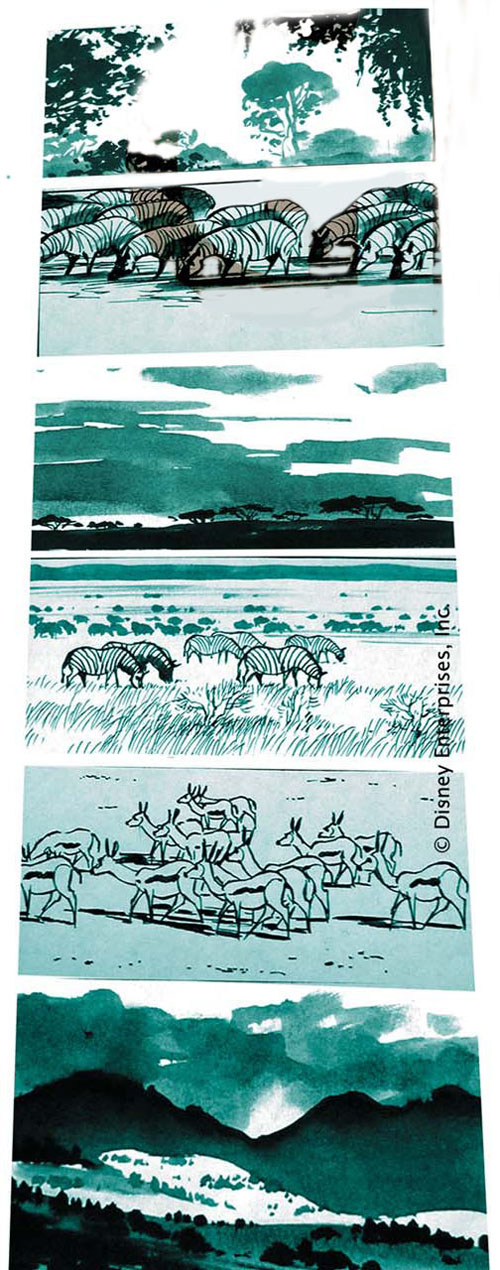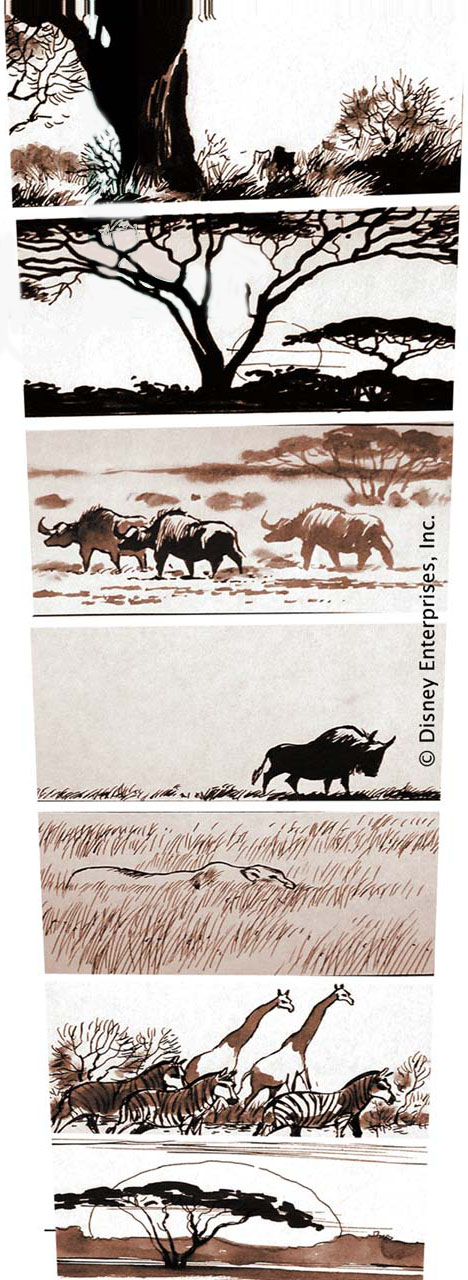INTRODUCTION

Working with film is challenging as you are creating thousands of pictures. They are all connected throughout a story with several actors: human or animals, cartoony, realistic or very stylized and, with lots of emotions, action and fantastic worlds. You are part of a creation process in which a dream world comes alive. It is scary and fascinating at the same time. So many artists create one piece of art that you alone would never be able to do.
What does it mean — Production Design? Exactly that, the design of the production; the “look” of the film. Of course, the Production Designer does not do all that independently. The vision of the director gives him or her a direction of where to go, and they are limited to a budget and a timeframe. Not to forget, the final look of the movie depends on the ability of a good design team of layout artists and background painters, who have to translate all the ideas. A feature film is the team effort of up to sixty artists in that department. If the production designer and the art director fail to keep the quality standards up, it could end in disaster. Usually a lot of major problems have to be solved. The movie has to look expensive, but should not be expensive to produce. During the production of Mulan, the executives asked me constantly if we could add a bit more detail in the backgrounds.
The overall look of the film was in their opinion “poor.” We were not using tonal mattes on the characters. Well, they did not use them in Lady and the Tramp. and it did not look cheap! There is usually a lot of fighting against windmills, and in case if in the end, it looks like different pieces of the movie don't fit together, it shows that the designers lost the battle against the “powers.”
I've always enjoyed working with so much talent, to get inspired and excited together with artists from very diverse disciplines. The preproduction time on a new movie in the very beginning is the best time. With complete artistic freedom, the assigned team creates the craziest and most fantastic ideas in beautiful sketches and paintings. Later, after production starts, fun is limited. Work has to happen within clear, defined borders. There are deadlines and the footage numbers become more important.
This is not a fast process. Sometimes it takes five or more years from the first ideas to the finished product.
In this book, I will try to explain the design process, show you a lot of examples and will also analyze some art pieces of the “masters.” I hope you enjoy them.
IN GENERAL
The Production Designer designs the movie. If necessary, he or she develops a visual style for the film, depending on the story, the target group and the budget. They translate the written script into visuals, including background-and character-styling, color and design language.
In the early stages of a new film, the Production Designer is part of the Visual Development team. This group explores all visual possibilities. They do research and try to come up with as many interesting ideas as possible, while working with complete artistic freedom. Usually at this time, the director is not yet involved.
As soon as a director has been assigned, the look of the movie is narrowed down. Some good directors have a vision about the look of the film and may be able to verbalize it.

Now the work of the visual development team is sorted out and a clear direction is defined. During this period of time, a production designer will be assigned to the project if he was not already part of the team.
The production designer now develops the final look of the movie in close connection with the director. Some presentation pieces showing the key moments of the story have to be done. They will reflect the look of the movie and backgrounds in combination with character designs. The prepro-duction team has to approve them before they are presented to the head of the production company for a final decision.
To sum it up to this critical point, in the beginning of a new production, a major part of the Production Designer's job is to sell the project with impressive-looking designs. That is especially important when outside investors are involved.
If no major disaster happens, the production is green lit. That means that the new project is announced to the outside world.
Now, it is necessary to analyze the style and to create a Style Guide. A style guide is a booklet of approximately 60 pages in which the basic rules of the styles are explained for the different departments: Layout, Background, Animation, Effects, Clean-up and Color. That is another very important step in the production process because so many different artists are involved. They have to learn everything about the new look and get used to it. For about the next eighteen months, they will have to live in that new world.
There is usually a training period of some weeks to allow the different artists to practice and create some test pieces. Sometimes new techniques have to be

developed, especially for combinations of 2-D and 3-D. All of that is discussed in a smaller group of department heads together with the production designer, the art director and the director. During that time, sources for possible problems should be eliminated and the work pipeline refined.
During the same time, the production designer develops a precise color concept for the first sequence to go into production. Here it shows how important it is to create a Color Script for the whole movie at a very early stage, after the basic story is approved, because usually the first sequence in production is not sequence l; it can be from the middle of the movie.
Now that the train cannot be stopped anymore, the hungry crew has to be fed with everything they need. More sequences are approved one after another. It will be necessary to redesign certain changed locations. Props are always needed, little details such as the style for certain effects have to be developed. It all has to fit the look. And, of course, after the finished animation the production designer is part of the Sweat Box group to approve rough and final animation, as well as the color combinations.
Toward the end of the production, he is involved in the designs for publicity, the title logo, the posters, and the merchandise.
